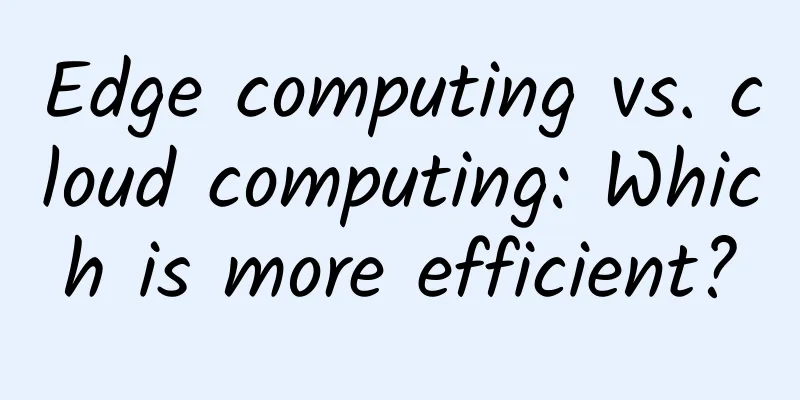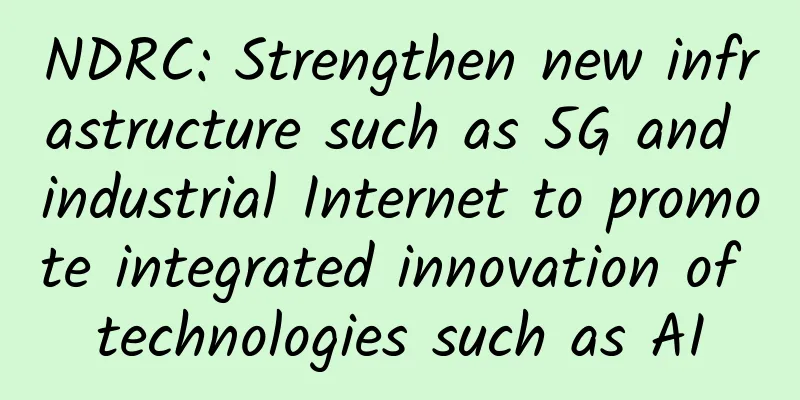Edge computing vs. cloud computing: Which is more efficient?

|
Cloud computing provides businesses with the opportunity to store, manage, and analyze information on remote data servers. At the same time, cloud computing also has some disadvantages, such as data processing delays. Therefore, businesses may encounter various difficulties when using cloud computing for time-critical tasks. Fortunately, the development of edge computing may help overcome this challenge. The following will discuss whether edge computing will replace cloud computing. In addition, you can also understand the advantages and disadvantages of edge computing and cloud computing technologies. And explore the future development of edge computing and cloud computing in depth to understand their views and impacts on the development of the IT industry.
The benefits of edge computing The implementation of this technology can solve some of the key current problems. It takes a lot of time for data to be transmitted from edge computing devices to data center servers for processing. Although this delay may not seem serious, every millisecond counts. In addition, it is necessary to reduce the pressure exerted on bandwidth. In another case, high traffic and long distances may significantly reduce network speeds. Unfortunately, cloud computing cannot currently solve these problems. This is why edge computing has many advantages over cloud computing. First, businesses can use it to process time-sensitive data. The technology relocates critical data processing to the edge of the network, so it can reduce the latency of information processing. Because of this feature, edge computing is ideal for applications that require instant responses. This will make them more powerful and faster to load. In addition, edge computing may be more popular than cloud computing because it ensures lower management costs. Sending the most important data over a short distance can save a lot of network and computing resources. Likewise, if various smart devices use edge computing instead of cloud computing, they could potentially gain a lot of benefits. This technology would guarantee an immediate response and provide the opportunity to make accurate and fast calculations. This feature would be particularly useful for the development of self-driving cars. Moreover, this technology opens up new opportunities for all large content providers, such as Netflix or Amazon. These companies are interested in the development of data streaming technologies, and edge computing has become a preferred solution. This approach allows users to access their favorite programs faster. In addition, companies have the opportunity to expand their services without sacrificing current performance. The benefits of cloud computing Unlike edge computing, with cloud computing, all data is processed and stored in a remote data center or server. Any device or application that needs to access this information must connect to the cloud. Still, the technology offers many benefits to businesses that use a standard network of servers. Thanks to cloud computing, such businesses can ensure that only authorized users can access stored data. According to a global study by Cisco, humans and machines are expected to generate about 800ZB of data by 2020. Undoubtedly, only cloud computing servers can store such a large amount of data. Furthermore, studies have shown that IoT devices in particular will generate more than 80ZB of data. Unfortunately, much of this information will be deleted because the devices’ storage space is insufficient to retain the data received. Although the main drawback of cloud computing is that processing speeds are not yet fast, the technology offers amazing processing power and storage space. These features can still be useful for small business owners and those who do not have time-critical tasks. Edge computing vs. cloud computing It is important to remember that sometimes you may need to use both edge computing and cloud computing technologies to achieve higher results. The combination of edge computing and cloud computing can provide enterprises with opportunities to maximize their potential while reducing their drawbacks. Following this approach will open up new horizons especially for IT and AI companies. IoT devices will be able to run faster and process data efficiently without losing storage capacity and processing power. Of course, at the moment, edge computing seems to have more advantages than cloud computing, but the advantages of cloud computing should not be underestimated. Today, the future of the network seems to lie somewhere between edge computing and cloud computing. No doubt, leading companies will find a way to get more benefits from these technologies and overcome their shortcomings. It will provide the possibility to improve many services and drive innovation. At the same time, some users predict the end of cloud computing technology. However, many experts are optimistic about the future development of cloud computing technology. In addition, at present, there is no analytical framework that can prove that cloud computing is becoming unpopular. Although edge computing offers solutions to many challenges, cloud computing remains an essential part of the IT industry. Today, both technologies remain important and provide data analytics solutions to various organizations. in conclusion As we all know, edge computing and cloud computing are different technologies that cannot and will not replace each other. Both technologies are important for the IT industry and allow different approaches to be utilized to gain the most benefits. However, many businesses today are turning to edge computing technology because it offers more opportunities compared to cloud computing. The decision of which technology to adopt depends on the goals and needs of the enterprise. Enterprises need to overcome existing technical challenges with edge computing and ensure it is effective for their business. It is important to remember that technology is constantly changing and businesses must adapt to new trends. However, it is necessary to choose solutions that help improve the business. In addition, businesses can choose edge computing and cloud computing to achieve their goals. |
>>: Sogou launches new AI voice recorder to lead the “new voice” in the voice recorder industry
Recommend
In-depth analysis of the seven major communication protocols of IOT
In the Internet of Things protocol, it is general...
Bloomberg: China is winning the multi-trillion dollar war for 5G
The coronavirus has not slowed down China’s stead...
Why are “low-altitude economy” and “synaesthesia” worth paying attention to?
At the beginning of the year, the central and loc...
National Day promotion: CUBECLOUD 30% off/Olu Cloud VPS 20% off/Asia Cloud 20% off/Varidata Hong Kong Cloud Server 50% off
73 years of prosperity, building dreams of thousa...
How to smoothly go online after MySQL table sharding?
[[431098]] Purpose of the table During the projec...
Sogou opens dictation service, the voice recorder industry enters the AI era
On August 28, 2019, Sogou held a press conference...
What impact will the Internet of Things have on corporate business?
Nowadays, whether people like it or not, the Inte...
The software-defined revolution: making SD-Branch possible
Today, software-defined networking is extending t...
Gartner lamented that there has never been such a volatile market in 25 years
According to Gartner's forecast, global IT sp...
Industrial Ethernet Market Expected to Exceed $350 Billion by 2032
The Industrial Ethernet market will grow from a c...
Wireshark network protocol analysis: interpreting the TCP protocol and understanding TCP three-way handshake and four-way handshake
TCP Transmission Control Protocol is a connection...
In the first half of the year, the number of Internet users in my country reached 940 million, and the number of active IPv6 users reached 362 million.
Yesterday, the China Internet Network Information...
Miao Wei: 5G temporary licenses will be issued this year and 5G terminals will be launched in the second half of the year
On January 10, Miao Wei, Minister of Industry and...
China's 5G connections have reached nearly 430 million, accelerating the exploration of vertical application markets
By the end of 2021, nearly 8% of the world's ...









